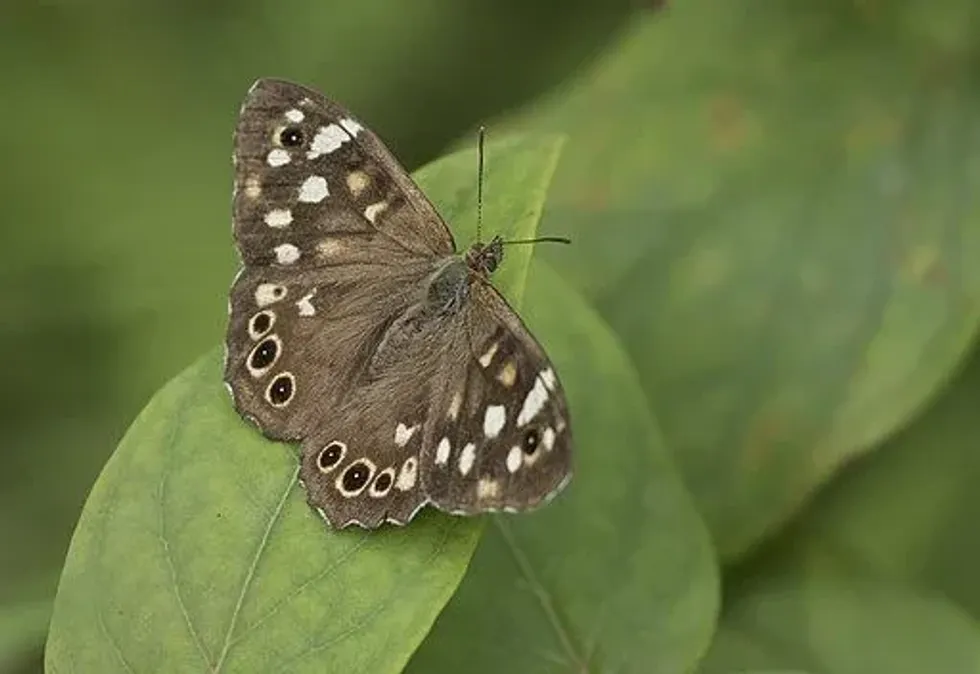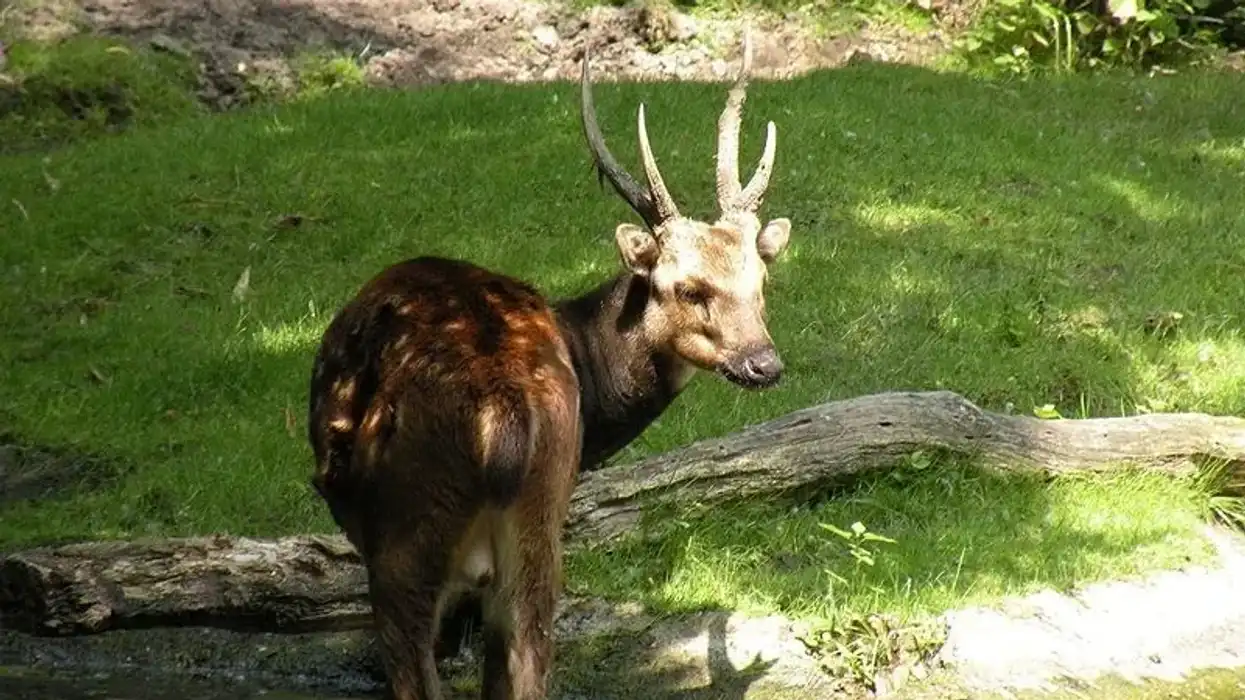Do you like butterflies, like the queen butterfly? Then here we have the speckled wood. The speckled wood is a type of butterfly, found along most of Europe, Asia Minor, and Africa.
They have been commonly spotted by most people in gardens and woodlands. Unlike many other butterflies, they tend to pupate and emerge from it all year round, with a spike in the summer months. While there are three different subspecies, the main difference in them comes from the gradient in coloration on their wings.
In the early 19th century, their population was seen to decrease dramatically, however since the '20s, it has regained its strength. In fact, one of the three species of the genus Pararge, the Pararge aegeria is abundant enough to disturb the habitat of another species, the Pararge xiphia.
Both male and female speckled wood look almost the same, though the female has slightly bright coloration and is a bit larger in size. Female butterflies mate with only one male, which leads to an interesting evolutionary choice of partners.
If this is of interest, then check out these queen butterfly facts and ghost ant facts.
Speckled Wood Interesting Facts
What type of animal is speckled wood?
The speckled wood butterfly is a type of butterfly. A butterfly is an insect.
What class of animal does a speckled wood belong to?
The speckled wood butterfly belongs to the class of Insecta.
How many speckled woods are there in the world?
There is no specific estimate range for the number of speckled wood butterflies in the world.
Where does a speckled wood live?
The speckled wood butterfly is found in the Palearctic realm. This range includes parts of Europe, Asia Syria, Russia, and Africa. The British Isles is the home of Scottish speckled wood.
What is a speckled wood's habitat?
Speckled wood butterflies are found dwelling amidst woodlands and other green areas, including urban gardens, hedgerows, tall grasses, and more. The speckled wood habitat range must consist of both shaded and sunny areas.
Who do speckled woods live with?
Speckled wood butterflies, especially males are extremely territorial and seen to be solitary. They are often seen grabbing spots in the sun where they remain until evening. If other butterflies invade their territory, it results in a confrontation where the winner retains the spot.
How long does a speckled wood live?
Speckled wood butterflies are born as caterpillars. Eggs hatch within a week, after which the caterpillars feed on leaves for months. Like butterflies, they live for around three weeks.
How do they reproduce?
Female speckled wood butterflies mate with one male-only, however, males may mate with multiple females. Males may either find a nice, sunny spot and wait for a female to arrive or patrol from one spot to another in search of a female. While mating, males deposit a spermatophore which the female uses to produce multiple eggs.
These eggs are laid on the underside of leaves in the woods. The more the number of eggs, the smaller their individual size. Neither parents look after the young.
The eggs hatch by themselves after a week. The larval caterpillars feed on a variety of grasses and leaves.
Adults feed on honeydew and nectar. After feeding, the caterpillars form a pupa over the winter, in which they undergo chrysalis. The pupa is green in color and turns brown later.
At a glance, the pupa may simply look like a leaf. After winter, they emerge from the pupa as fully grown butterflies in search of a mate. There can be 2-3 fully grown batches in a year.
What is their conservation status?
The speckled wood butterfly (Pararge aegeria) has been listed as Least Concern by the Internation Union for Conservation of Nature. Since the '70s, the population of speckled wood (Pararge aegeria) butterflies has been increasing and taking over the habitat of the former butterfly.
Their population seems to be stable. As of now, no special conservation measures are being taken, though their population is being monitored.
Speckled Wood Fun Facts
What do speckled woods look like?

Found amidst hedgerows and gardens, the speckled wood butterfly is dark brown in color with a pair of upper and lower wings. Along with shades of light and dark brown, their wings have eye-shaped specks at the end in yellow-orange and black.
When sitting, their wings lie flat on either side of their body. Their body is soft and covered in hairs. The speckled wood butterfly (Pararge aegeria) has more orange undertones than yellow on its wings.
Butterflies from the north and larger in size and wingspan than those from the south. As caterpillars, they have a long, segmented green body with yellow and white stripes.
How cute are they?
Both in caterpillar and butterfly form, the species is extremely cute. Though dull in color, the butterflies are harmless and covered in a fuzzy later of hair.
One can often see them within the grasses or hedgerows in the summer, where they tussle with one another in the air. When in the dappled woods, or on tree barks, their dark brown color makes them difficult to spot.
How do they communicate?
Generally, butterflies communicate via producing chemicals. The pheromones produced by a male butterfly can attract females. They also use physical actions and color patterns to communicate.
How big is a speckled wood?
A speckled wood butterfly has a wingspan of 1.8-2 in (47-50 mm). Hence, it is half the size of a large Monarch butterfly.
How fast can speckled woods move?
Butterflies are generally fast fliers due to their large wing size as compared to their body size. Though the speckled wood butterfly is often seen dallying around in summer, across hedgerows and grasses, it is safe to assume that they can fly quickly when needed.
How much does a speckled wood weigh?
The exact weight of a speckled wood butterfly is not known.
What are the male and female names of the species?
Both male and female butterflies are called speckled wood.
What would you call a baby speckled wood?
A baby or newborn speckled wood would be a larva, and in the next stage of life, before they are an adult, they are called a caterpillar.
What do they eat?
The speckled wood butterflies feed on aphid honeydew. The honeydew is extracted from the aphid flowers.
Are they harmful?
The speckled wood is not a dangerous insect, like the blister beetles or Japanese beetle, and does not pose a threat to humans. However, some people might be allergic to insects like butterflies and moths that have a fuzzy layer of hair on their bodies.
Would they make a good pet?
Yes, the speckled wood caterpillar and butterfly can be a great, low-maintenance pet! One must ensure that as green caterpillars they get enough leaves of their choice, along with dappled sunlight.
Caterpillars eat Yorkshire Fog, meadow grass, couch grass, and other types of grasses. After they emerge as butterflies, one can release them or keep them within a netted cage. However, the speckled wood species have quite short lifespans, not even lasting a year.
Did you know...
It has been seen that larger speckled wood males tend to take to defend, whereas smaller ones take to patrolling for females during the breeding season. A way of predicting this is - if the speckled wood male has three or more spots, then it will likely be a defending male.
Females prefer defending speckled wood males due to the inherent chances of them being stronger survivors.
Naming the speckled wood
The name speckled wood is due to the speckled marks on its wings in yellow and black, along with the wood-like dark brown coloration seen on its wings. Just like its name, the speckled wood butterfly is often spotted in dappled woodlands, merging with the wooden bark of trees.
What do speckled wood caterpillars eat?
As green caterpillars, the speckled wood feed on a variety of grass, like common couch grass, false brome grass, Yorkshire fog grass, and more.
For more relatable content, check out these fairyfly and stick bug pages.
You can even occupy yourself at home by coloring in one of our free printable speckled wood coloring pages.









